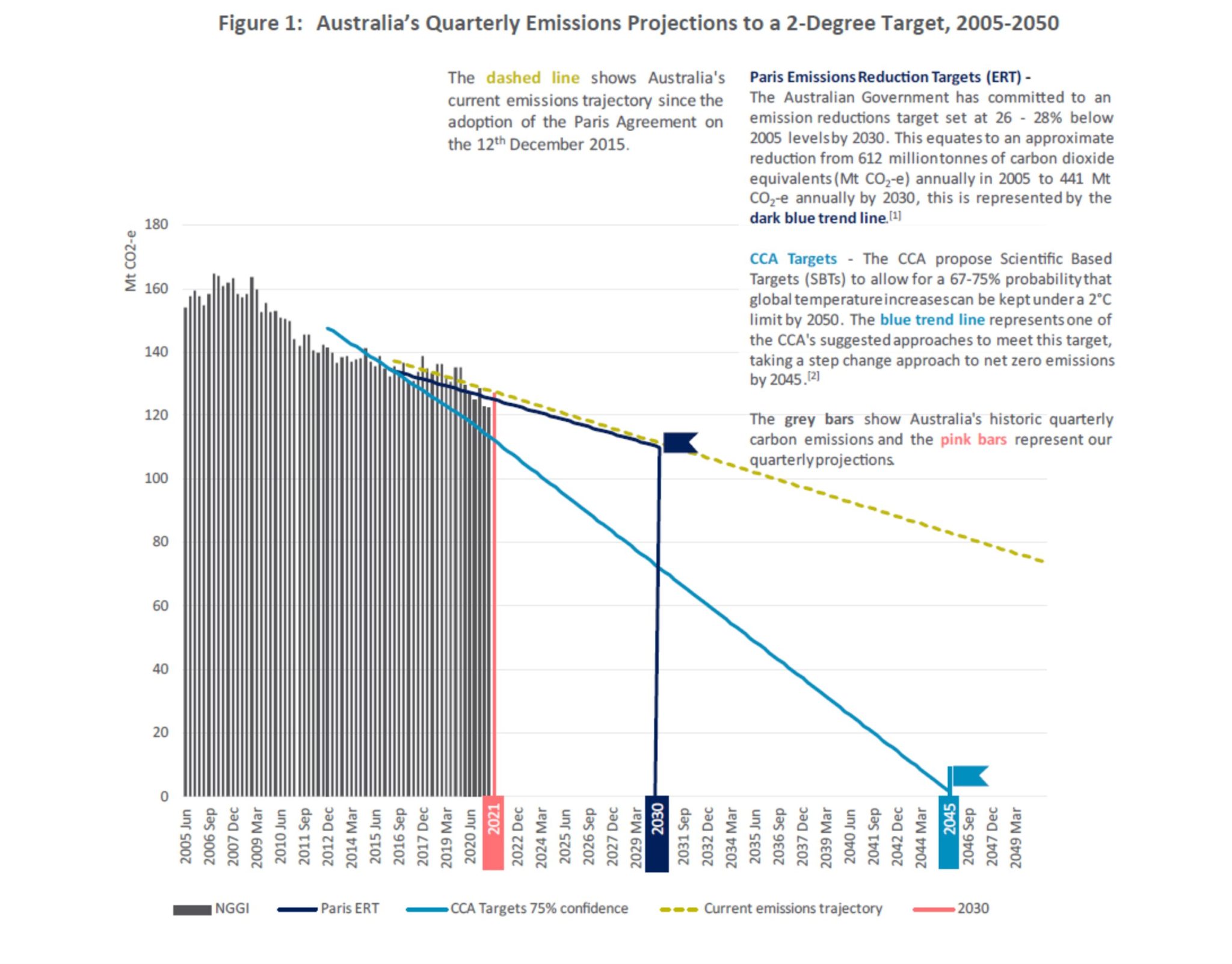New questions have been raised over the ability of Australia to meet its new emissions forecast, with one prominent consultancy saying there is no evidence the Morrison government’s projections, that Australia’s emissions could fall by 35 per cent by the end of the decade, are achievable.
The latest Tracking 2 Degrees Report, prepared by consultancy Ndevr Environmental, found that while the Covid-19 pandemic have helped to push Australia’s emissions to their lowest levels since 2005, the rate of emissions reductions have not been sufficient to put Australia on track for the 35 per cent reduction that the Morrison government has claimed Australia will be able to achieve.
“We expect emissions to continue to rise as COVID 19 state-wide lockdowns cease. Based on our projections and the underlying policy framework, we see no evidence suggesting the Australian government’s recently announced 35 per cent reduction projections by 2030 are achievable,” Ndevr says.
The analysis considered the Morrison government’s current policy settings, finding that it may even be difficult for Australia to deliver its official target of reducing emissions by between 26 and 28 per cent, saying that emissions would need to continue falling at a level aligned with the falls in emissions triggered by the Covid-19 pandemic.
Ndevr’s analysis suggests that Australia’s current policy settings have Australia failing to keep emissions within its official 2030 emissions budget, adopted under the Paris Agreement, by around 95 million tonnes across the period between 2020 and 2030 – representing approximately 20 per cent of one year of Australia’s emissions.
“If Australia continues its current emissions trajectory, then by 2030, Australia would have cumulatively emitted over 95 Mt CO2-e more than the Paris [emissions reduction target] trajectory. This is equal to 0.2 years of Australia’s entire national emissions,” the report says.

Ndevr says its analysis shows that Australia is falling short of emissions reductions consistent with global action to limit global warming to below 2 degrees, and is significantly short of the emissions cuts recommended by the Science-Based Targets Initiative.
The analysis shows that while Australia’s emissions have been falling in recent years, and even to their lowest level since 2005, they are not falling at a rate fast enough to deliver on the federal government’s 2030 target and nowhere near fast enough to reach zero net emissions by 2050.
Ndevr’s analysis of recent emissions trends shows that while significant progress is being made towards reducing emissions in the electricity sector, emissions in other parts of the economy, including industrial energy use, transport, and fugitive emissions have continued to grow.
The Morrison government relied heavily on its latest official projections during the COP26 talks, including when it announced that it would not be setting a stronger 2030 target, as countries had been expected to do, and will be under pressure once again in next year’s COP.
Both prime minister Scott Morrison and energy minister Angus Taylor repeatedly cited the projections to argue the Australia would “meet and beat” its official 2030 target, without explaining that this figure was based on a largely hypothetical “high technology scenario”.
The government’s official projections, not including the hypothetical scenario, show Australia on track to cut emissions by just 30 per cent by 2030.
As has been detailed by Ketan Joshi, the projections produced by the federal government suggesting that Australia could reduce emissions by 35 per cent was never designed to serve as its core emissions forecast, but rather a piece of ‘sensitivity analysis’ produced by the government based on a hypothetical scenario where technology development occurs at a much faster rate than is expected.
The Australian government keeps saying that its own projections show a 35% drop in emissions by 2030 (relative to 2005).
It's a lie. I will quickly explain how it's crafted, because it's really important.
Time, my friends, for a 'lil thread https://t.co/GmjJxpmcCt
— Ketan Joshi (@KetanJ0) October 26, 2021
Recent modelling produced by the Morrison government showed that its plan for achieving its ‘net zero’ emissions target falls short of delivering on that target in several respects.
The modelling shows that the Morrison government expects to cut Australia’s emissions by around 60 per cent by 2050 – meaning that Australia could be continuing to emit an equivalent of 40 per cent of its 2005 levels in 2050, with an additional 25 per cent of Australia’s emissions being accounted for through the purchase of international carbon offsets.
This still leaves a 15 per cent gap in Australia’s emissions to get to net zero, which the modelling suggests may be achieved through unexpected and unspecified advancements in technologies.









